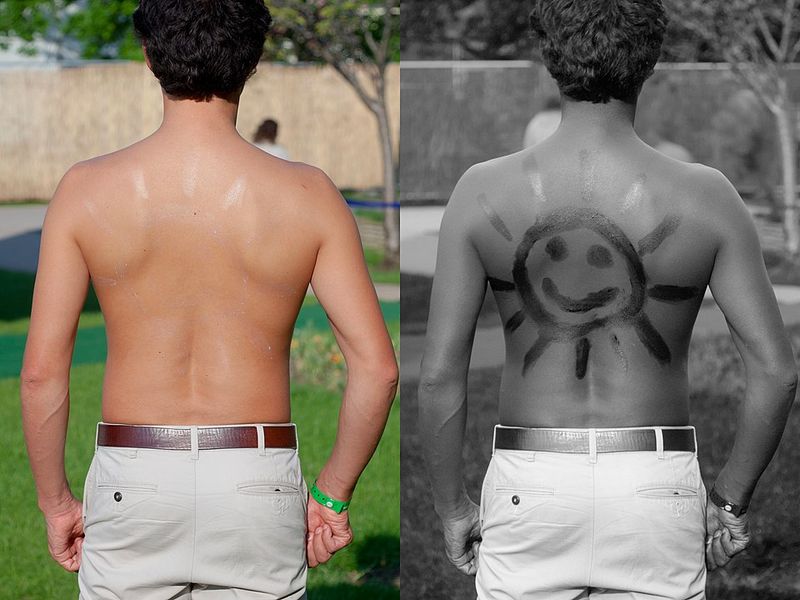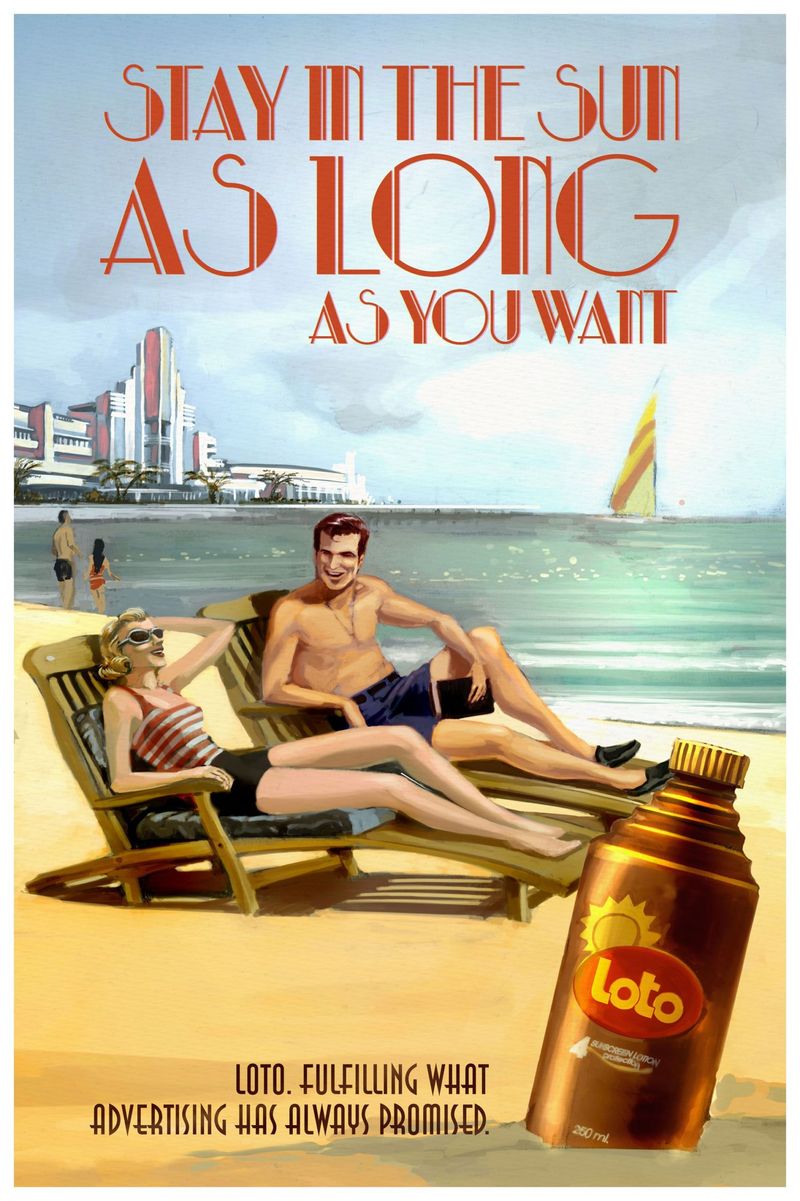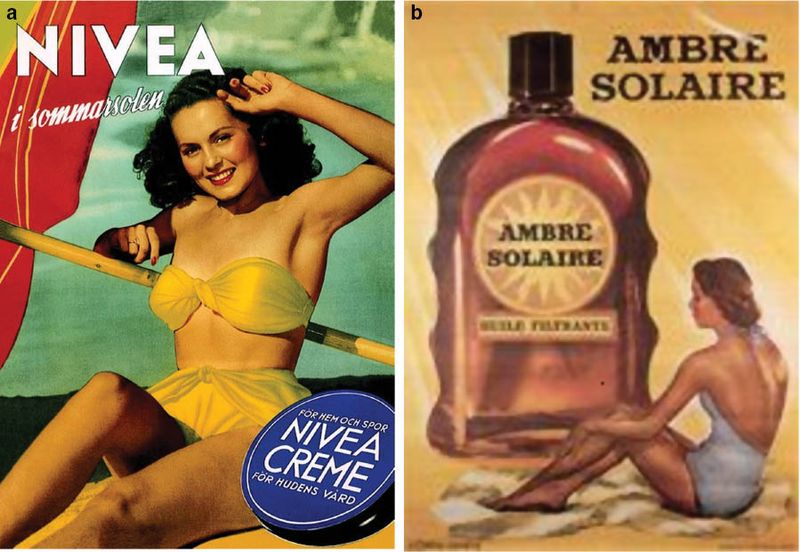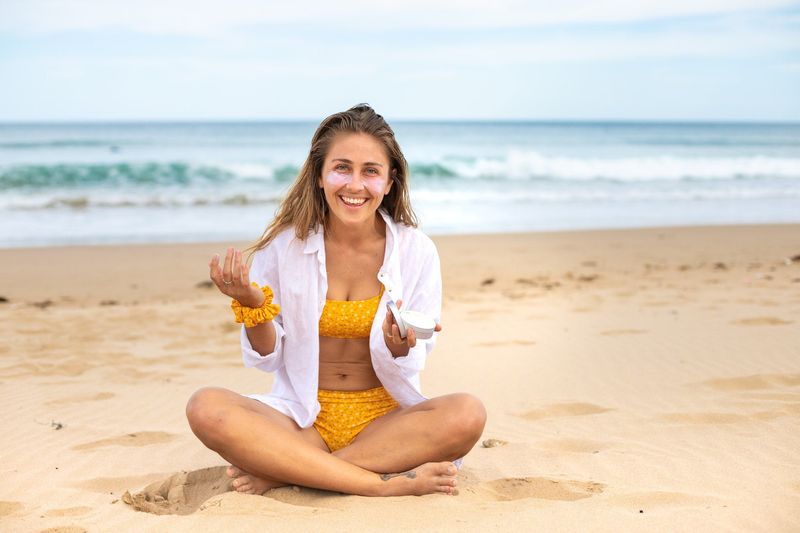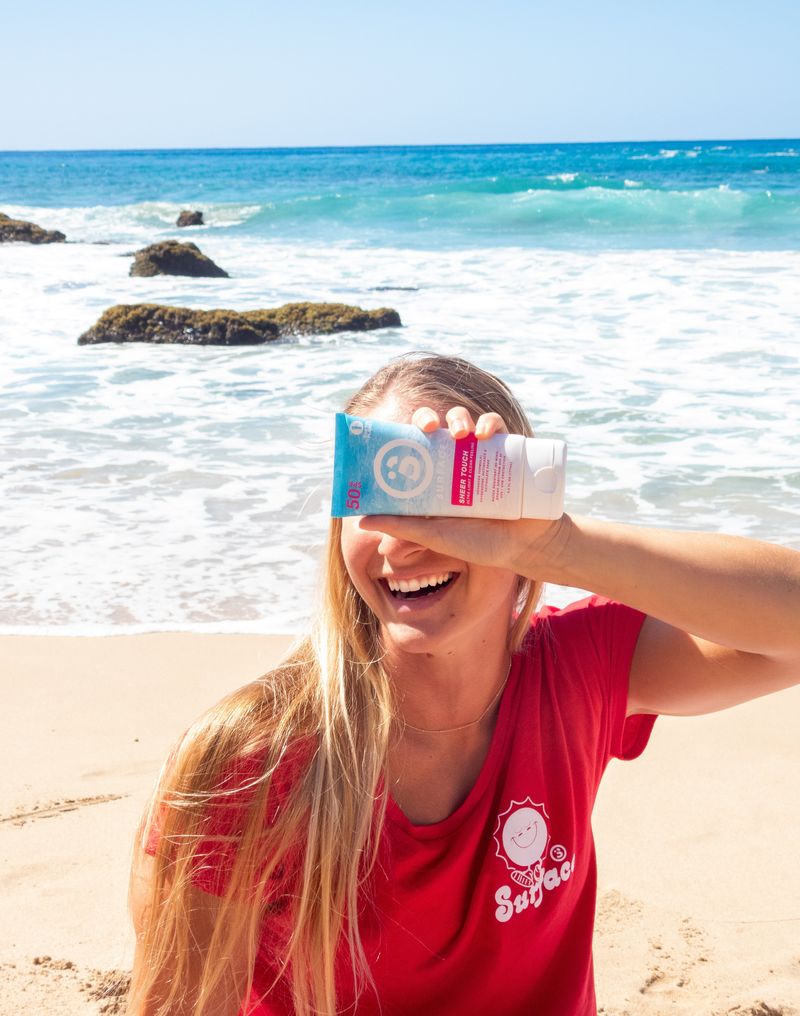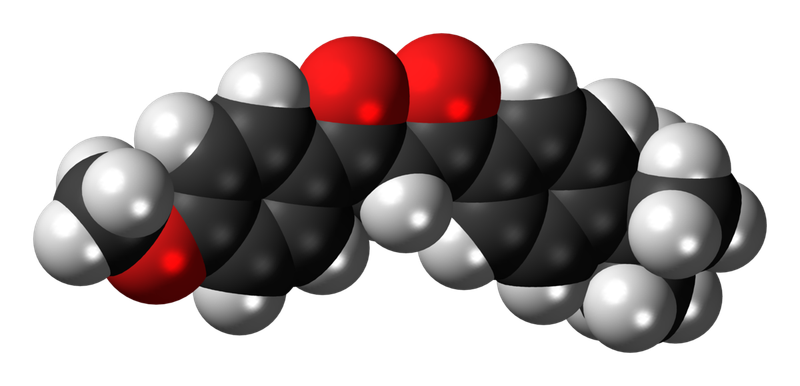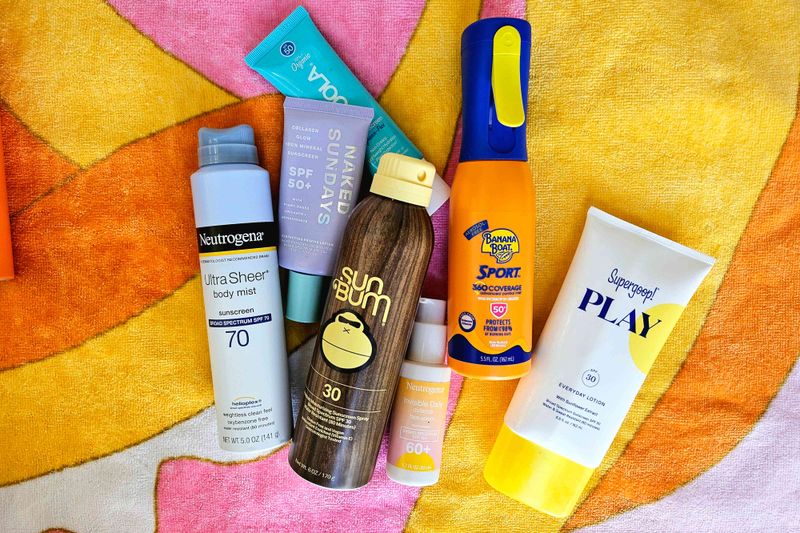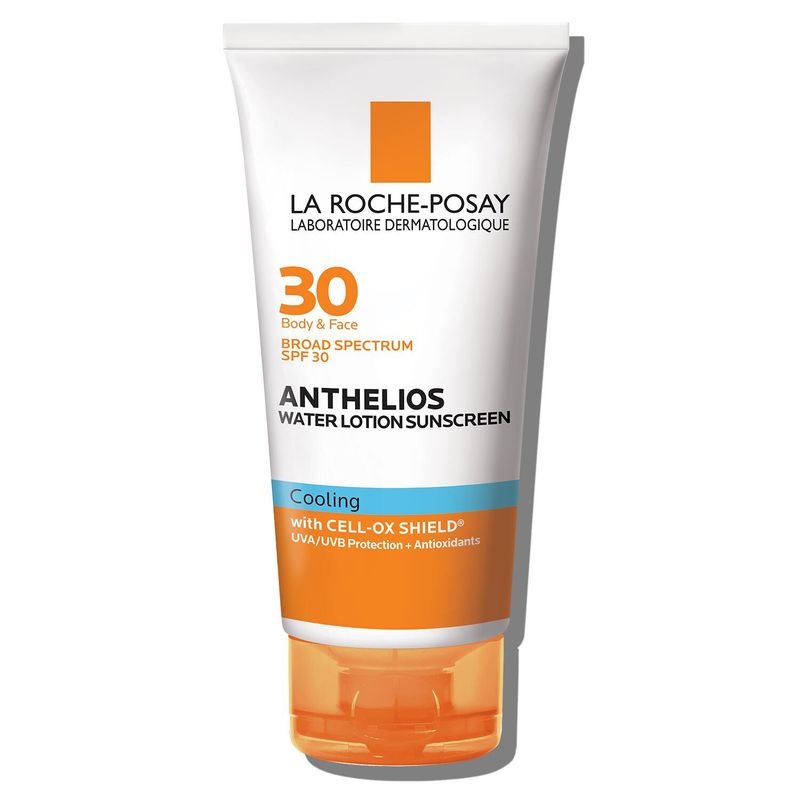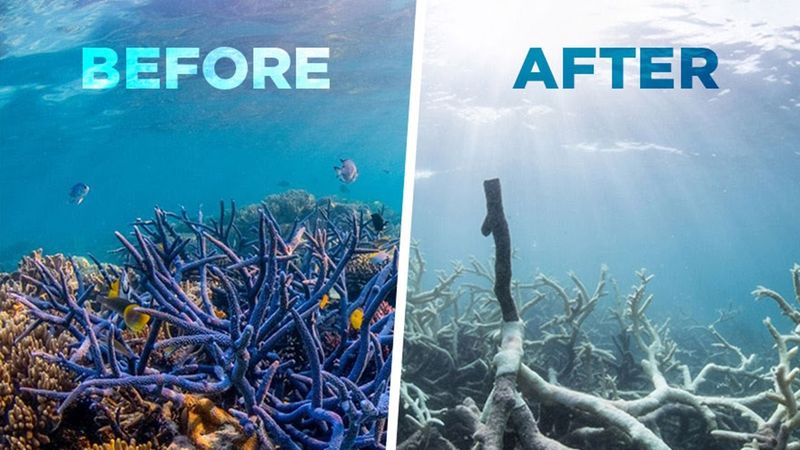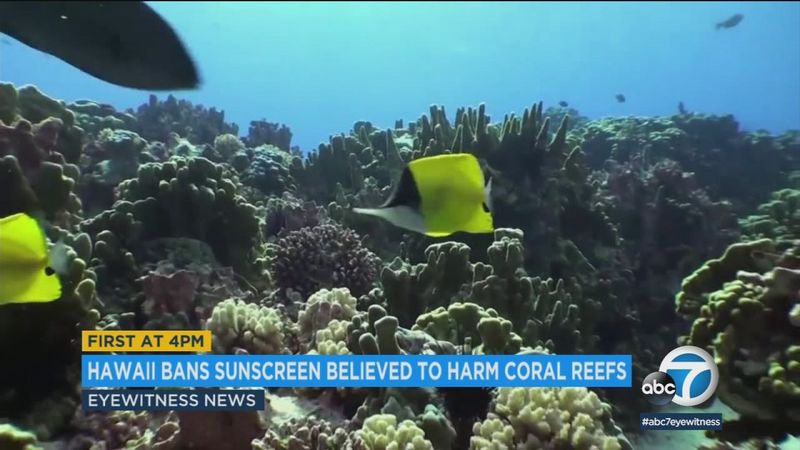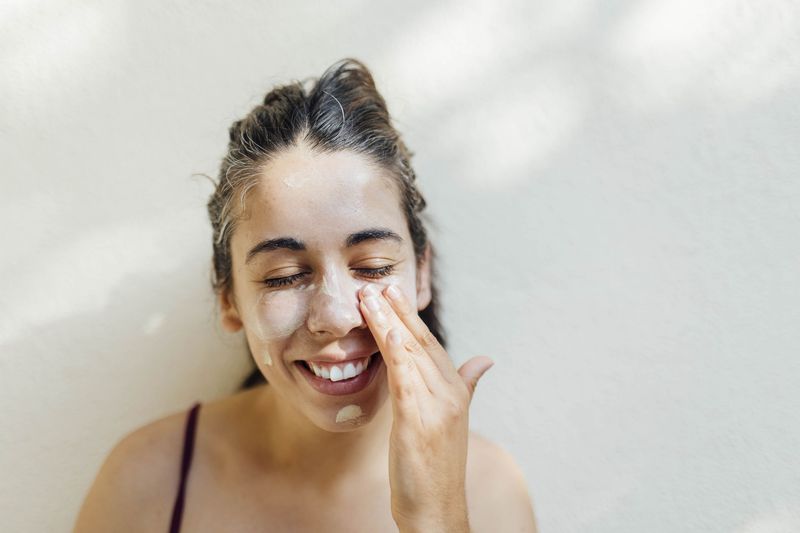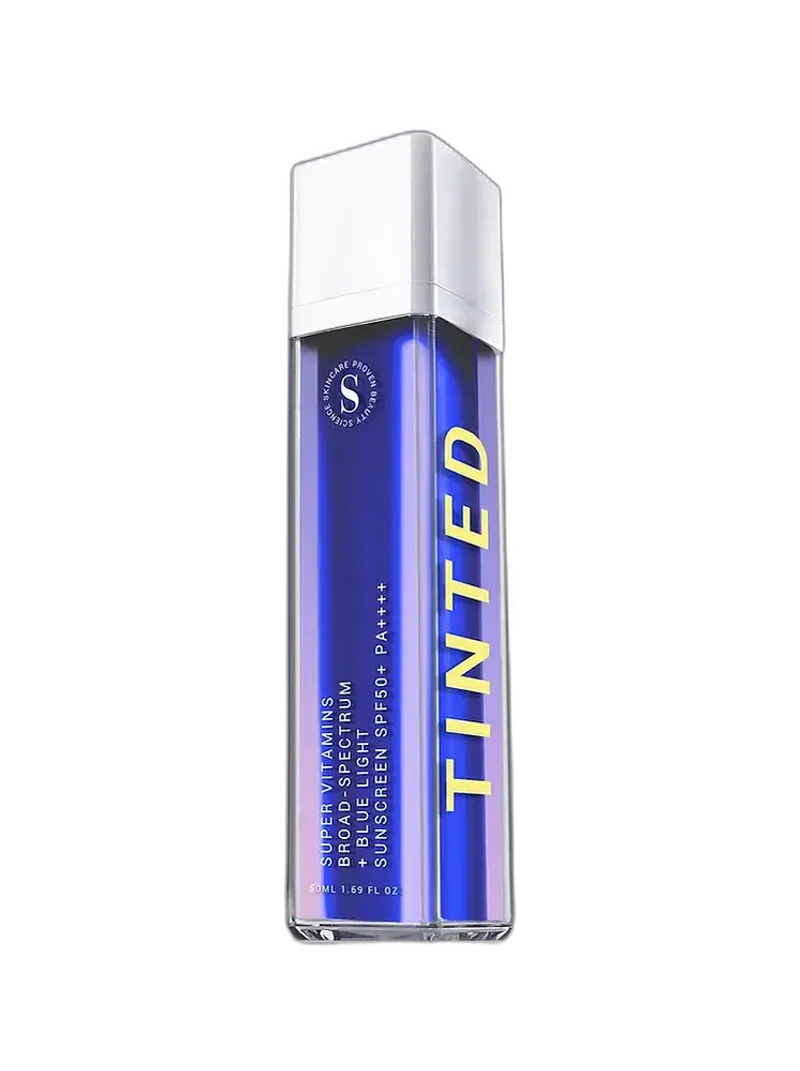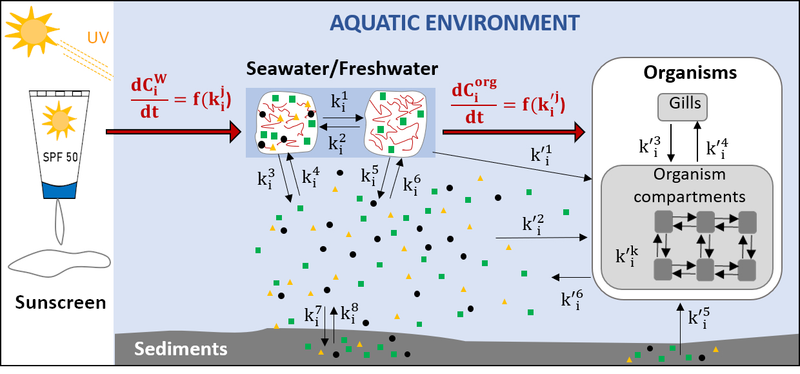Sunscreen has evolved dramatically from humble beginnings to sophisticated protection. What started as simple creams has transformed into scientifically advanced formulas that shield us from harmful UV rays. This journey through sunscreen’s most important milestones reveals how our understanding of sun protection has grown alongside innovations in chemistry and dermatology.
1. The First UV-B Absorbers (1928)
German chemists Hausser and Vahle pioneered modern sunscreen by creating benzyl salicylate and benzyl cinnamate. These groundbreaking compounds were the first scientifically developed UV-B filters.
Their discovery wasn’t just chemistry—it was a revolution in skin protection. Before this breakthrough, people relied on natural oils or thick pastes that provided minimal protection.
These early UV filters laid the foundation for all future sunscreen development, though they only blocked a narrow spectrum of harmful rays. This scientific milestone marked the beginning of intentional, laboratory-created sun protection rather than folk remedies.
2. Australia’s Sunburn Solution (1932)
Milton Blake, a chemist from down under, created history with his 10% salol (phenyl salicylate) cream. Australia’s harsh sun demanded serious protection, and Blake delivered the continent’s first commercial sunscreen.
Sun-loving Aussies embraced this innovation quickly. The cream provided unprecedented protection against the intense southern hemisphere sunlight that was causing alarming rates of sunburn and skin damage.
While primitive by today’s standards, Blake’s creation marked Australia’s first step toward its future leadership in sun protection research and development. His formula addressed a critical public health need in a country where outdoor culture and intense UV radiation created perfect conditions for skin damage.
3. Europe’s Sunscreen Pioneer (1936)
L’Oréal made sun protection fashionable with Ambre Solaire—Europe’s first widely marketed sunscreen. The amber-colored oil gained popularity among the newly emerging sunbathing culture of the 1930s.
Packaged in distinctive orange bottles, Ambre Solaire promised the glamour of a golden tan with reduced burning. French Riviera vacationers quickly adopted this revolutionary product as tanning became associated with leisure and luxury.
Beyond protection, Ambre Solaire represented a cultural shift. Sunscreen was transforming from medicinal necessity to lifestyle product. L’Oréal’s marketing genius positioned sun protection as part of beauty routines rather than merely preventative healthcare, forever changing how Europeans approached sun exposure.
4. Mountain-Inspired Protection (1946)
After suffering a brutal sunburn while climbing Piz Buin mountain, Swiss chemistry student Franz Greiter turned pain into innovation. His “Glacier Cream” (later marketed as Piz Buin) became the first purposely designed mountaineering sunscreen.
Greiter recognized that altitude intensified UV exposure—something many climbers learned the painful way. His cream addressed the specific needs of high-altitude adventurers facing both direct and snow-reflected radiation.
The formula’s success among mountaineers demonstrated the need for specialized sun protection beyond beaches. Greiter’s personal experience-driven innovation would later lead him to develop the SPF concept, making this mountain-inspired product doubly significant in sunscreen history.
5. From Military to Mainstream (1950s)
Red Vet Pet—a red veterinary petroleum jelly—protected soldiers during World War II before transforming into America’s beloved Coppertone. Airman Benjamin Green’s military sunblock evolved into a cultural phenomenon once he added cocoa butter and coconut oil for consumer appeal.
The iconic Coppertone Girl advertisement—featuring a puppy pulling down a little girl’s swimsuit—became one of advertising’s most recognizable images. This marketing masterstroke helped normalize sunscreen use for American families.
Coppertone’s success story represents how military necessity often drives civilian innovation. The transition from battlefield protection to beach day essential marked sunscreen’s entry into everyday American life, establishing sun protection as a standard summer ritual rather than a specialist product.
6. The Birth of SPF (1974)
Franz Greiter revolutionized sun protection by introducing the Sun Protection Factor (SPF) system. This numerical rating made comparing products possible for the first time, giving consumers clarity about protection levels.
The genius of SPF lay in its simplicity—a number indicating how much longer protected skin could stay in the sun before burning. SPF 15 meant you could theoretically remain in the sun 15 times longer than unprotected skin.
This standardized measurement transformed sunscreen marketing and usage. No longer were consumers forced to guess which product worked better—the numbers told the story. SPF remains the universal language of sun protection nearly five decades later, though modern understanding acknowledges its limitations in measuring only UVB protection.
7. Swimming with Protection (1977)
The phrase “water-resistant” transformed beachgoers’ experiences when it debuted on sunscreen labels in 1977. Previous formulations washed off immediately in water, leaving swimmers vulnerable after the first splash.
New polymers and binding agents created formulas that maintained protection during aquatic activities. Early water-resistant products promised 40 minutes of effectiveness while swimming—revolutionary for its time.
This innovation particularly benefited athletes and children who alternated between water and shore. Parents rejoiced at not having to chase down kids for constant reapplication. Though modern standards now distinguish between 40-minute and 80-minute water resistance, this 1977 breakthrough fundamentally changed how we approach sun protection during water activities.
8. Beyond Burns: UVA Protection Emerges (Late 1970s-80s)
A scientific revelation rocked the sunscreen world: UVB rays cause sunburns, but invisible UVA rays silently damage skin long-term. This discovery sparked the development of broad-spectrum protection addressing both threats.
New ingredients like avobenzone and zinc oxide entered formulations to combat the full UV spectrum. The beauty industry pivoted from promoting tanning to emphasizing comprehensive protection against premature aging and deeper skin damage.
Consumer education campaigns highlighted how UVA rays penetrate glass and clouds, requiring year-round protection. The term “broad-spectrum” became the new gold standard in sun protection marketing. This expanded understanding fundamentally shifted sunscreen’s purpose from simply preventing burns to providing complete photoprotection against multiple forms of radiation damage.
9. Avobenzone’s Global Journey (1978-1988)
European sunbathers enjoyed superior UVA protection a decade before Americans thanks to avobenzone. This powerful UVA filter received European approval in 1978 but remained unavailable in the US until FDA approval in 1988.
Avobenzone (butyl methoxydibenzoylmethane) filled a critical gap in sun protection by absorbing the UVA rays that cause premature aging and deeper skin damage. Its introduction marked the true beginning of effective broad-spectrum protection.
The compound’s delayed American approval highlights how regulatory differences impact public health. European sunscreen users benefited from comprehensive protection years before their American counterparts. This regulatory gap persists today, with European sunscreens often containing newer filters still awaiting FDA clearance.
10. Mainstream Protection Standards (1990s)
The 1990s witnessed sunscreen’s transformation from occasional beach companion to everyday essential. SPF 15-30 products with broad-spectrum protection became the gold standard, appearing in daily moisturizers and makeup.
Dermatologists began recommending year-round sun protection, not just during summer months. The link between UV exposure and skin cancer gained wider public understanding, helping drive regular sunscreen use.
Formulations improved dramatically, becoming less greasy and more cosmetically elegant. Gone were the days of thick white pastes—newer products absorbed quickly and felt lightweight. This decade established the protection benchmarks we still reference today, with SPF 15 as the minimum recommendation for daily use and higher SPFs for extended outdoor activities.
11. Higher Protection Demands (Early 2000s)
Public awareness about skin cancer reached new heights in the early 2000s, driving demand for stronger protection. SPF 30+ became the new baseline as consumers sought maximum defense against harmful rays.
Improved UVA filters like Mexoryl SX (approved in the EU in 1991 but only in the US in 2006) enhanced broad-spectrum coverage. Sunscreen formulations began incorporating antioxidants to fight free radical damage caused by sun exposure.
Marketing shifted to emphasize anti-aging benefits alongside cancer prevention. Celebrity dermatologists promoted daily high-SPF use through television appearances and magazine features. This era established the concept that serious sun protection wasn’t just for beach days—it belonged in everyone’s daily skincare routine year-round.
12. Truth in Labeling (2011 FDA Regulations)
The FDA overhauled sunscreen regulations in 2011, bringing clarity to confusing claims. Terms like “waterproof” and “sweatproof” were banned as misleading, replaced with specific “water-resistant (40 or 80 minutes)” labeling.
Broad-spectrum claims now required standardized testing proving UVA protection proportional to UVB protection. Products failing this test could no longer claim to prevent skin cancer or early skin aging.
The regulations also mandated that sunscreens below SPF 15 carry warnings stating they only prevent sunburn, not skin cancer or premature aging. These changes empowered consumers to make informed choices based on standardized, truthful information. The 2011 regulations represented a significant victory for consumer advocates who had long pushed for more transparent sunscreen marketing.
13. Coral Concerns Change Formulas (2010s)
Marine biologists sounded the alarm: common sunscreen chemicals were damaging coral reefs. Studies found oxybenzone and octinoxate contributed to coral bleaching even in tiny concentrations—just one drop in six Olympic-sized pools could be harmful.
This revelation sparked the “reef-safe” movement among environmentally conscious consumers and brands. Mineral sunscreens using zinc oxide and titanium dioxide emerged as coral-friendly alternatives to chemical filters.
Eco-tourism destinations began encouraging or requiring reef-safe sunscreen use. Travel magazines featured articles about responsible sun protection in marine environments. This environmental awakening represented a significant shift in how we evaluate sunscreen safety—expanding concerns beyond human health to include ecosystem impacts.
14. Hawaii’s Groundbreaking Ban (2018)
Hawaii made environmental history by passing the world’s first sunscreen ingredient ban to protect coral reefs. Senate Bill 2571 prohibited the sale of sunscreens containing oxybenzone and octinoxate, effective January 2021.
The legislation followed research showing these chemicals damage coral DNA, trigger bleaching, and disrupt marine reproduction. Hawaii’s tourism-dependent economy relies on healthy reefs, making this environmental protection economically strategic.
Sunscreen manufacturers scrambled to reformulate products to meet the new requirements. Some opposed the ban, citing limited human safety alternatives, while others embraced the challenge. Hawaii’s bold move inspired similar legislation worldwide and accelerated the development of reef-friendly formulations, demonstrating how local policy can drive global industry change.
15. Palau’s Comprehensive Protection (2020)
The tiny island nation of Palau implemented the world’s strictest sunscreen regulations, banning ten chemicals instead of just two. This comprehensive approach prohibited oxybenzone, octinoxate, octocrylene, avobenzone, and other common filters to safeguard their pristine marine ecosystems.
Visitors found their sunscreens confiscated at airports if they contained prohibited ingredients. The country’s “Responsible Tourism Education Act” emphasized environmental education alongside enforcement.
Palau’s dramatic step reflected their cultural connection to the ocean and reliance on marine tourism. With 1,300+ fish species and 700+ coral species in their waters, Palau prioritized ecosystem health over convenience. Their bold policy represents the growing tension between human convenience and environmental preservation in sunscreen development and regulation.
16. Minerals Get Official Approval (2019)
The FDA granted zinc oxide and titanium dioxide coveted GRASE status—Generally Recognized as Safe and Effective. This designation confirmed what many dermatologists had long believed: mineral sunscreens offer reliable protection with minimal safety concerns.
Simultaneously, the FDA requested additional safety data for twelve chemical filters, including popular ingredients like avobenzone and oxybenzone. This regulatory distinction accelerated the market shift toward mineral formulations.
Mineral filters work differently than chemical ones—physically blocking and scattering UV rays rather than absorbing them. Once maligned for their chalky white appearance, modern mineral formulations use micronized particles and tinted bases to improve wearability. The GRASE designation gave consumers and healthcare providers greater confidence in recommending mineral options, especially for children and those with sensitive skin.
17. Mineral Formulas Take Center Stage (2019-2021)
Consumer preferences shifted dramatically toward mineral sunscreens during this period. Environmental concerns, regulatory changes, and growing ingredient safety awareness fueled unprecedented demand for zinc oxide and titanium dioxide formulations.
Brands raced to solve mineral sunscreen’s biggest challenge: the dreaded white cast. Innovative tinted formulas, nano-sized particles, and new dispersion technologies created more cosmetically elegant options for diverse skin tones.
Celebrity and influencer endorsements accelerated the trend, with “clean beauty” advocates promoting mineral options on social media. Major retailers created dedicated sections for mineral and reef-safe sunscreens. This market transformation represented a remarkable full-circle moment—the oldest sunscreen ingredients (minerals) became the most sought-after modern solution.
18. Multi-Functional Protection Evolves (2020s)
Modern sunscreens transcend UV protection, addressing multiple environmental threats. Iron oxides entered formulations to shield against visible light and blue light from digital devices—both linked to hyperpigmentation in darker skin tones.
Antioxidant-rich formulas combat free radical damage beyond what UV filters alone can prevent. Ingredients like niacinamide, vitamin C, and botanical extracts provide additional skin benefits while enhancing photoprotection.
Tinted sunscreens serve triple duty: providing UV protection, evening skin tone, and blocking visible light wavelengths that traditional sunscreens miss. This evolution reflects our growing understanding of comprehensive skin protection needs. The humble sunscreen has transformed into a sophisticated skincare product addressing multiple dimensions of environmental damage while often providing additional skin benefits.
19. The Science Behind SPF Testing (Present Day)
Behind every SPF number lies rigorous scientific testing requiring precisely 2mg of product per square centimeter of skin. This laboratory standard ensures consistent results but rarely matches real-world application, where most people apply just 25-50% of the recommended amount.
Human test subjects participate in controlled UV exposure tests while wearing the product. Researchers measure how long it takes protected skin to develop redness compared to unprotected skin.
Water resistance testing involves immersion cycles followed by reexamination of protection levels. These standardized protocols allow meaningful comparison between products but highlight the gap between laboratory conditions and typical usage. The significant disparity between tested and actual application amounts explains why many people burn despite using high-SPF products.
20. Ongoing Safety and Environmental Review (Present Day)
Sunscreen ingredients face unprecedented scrutiny as regulatory bodies balance human safety with environmental concerns. Absorption studies show certain chemical filters enter bloodstreams at higher levels than previously thought, prompting additional research.
The scientific consensus maintains that sunscreen benefits outweigh potential risks. Skin cancer prevention remains the primary consideration while research continues on systemic absorption and environmental impacts.
Next-generation filters already used internationally await FDA approval in the US. Ingredients like Tinosorb and Mexoryl XL offer excellent protection with potentially improved safety profiles. This ongoing evaluation represents the tension between precaution and protection—weighing known skin cancer risks against theoretical concerns about ingredients while seeking formulations that safeguard both humans and ecosystems.

